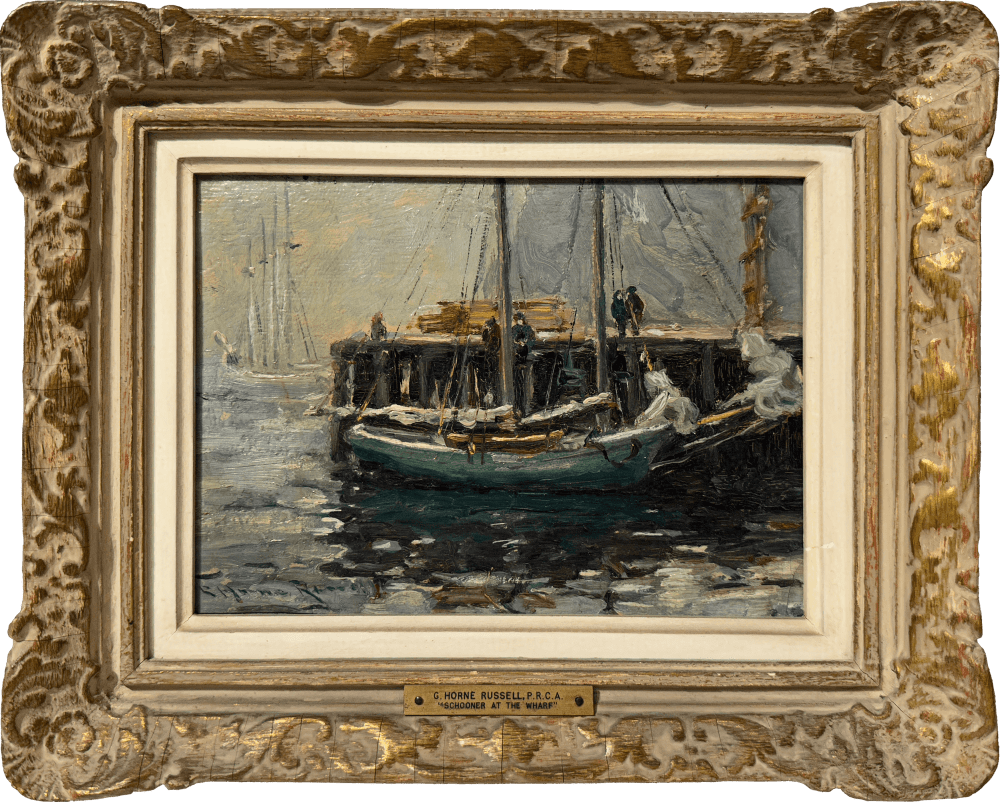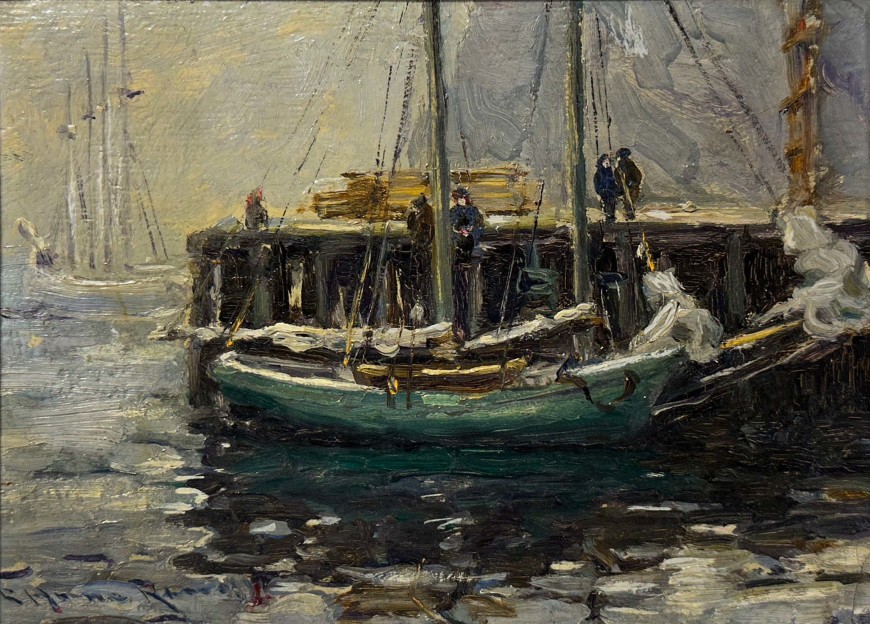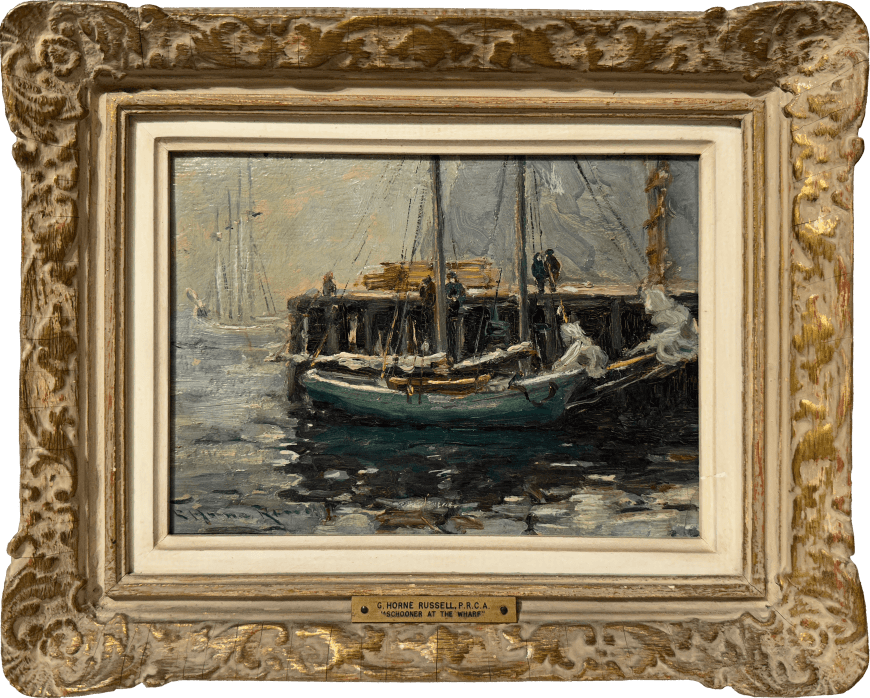-
Artworks
G. Horne RussellSchooner at the Wharf1861-1933Oil on board
6 1/4 x 8 3/4 inCopyright Alan Klinkhoff Gallery
15.9 x 22.2 cmSoldInscriptions
signed, ‘G Horne Russell’ (lower left); titled by William Watson on Watson Art Galleries label, ‘Schooner at the Warf’ (verso)Provenance
Watson Art Galleries, Montreal, Inventory No. 13415
Private collection, Montreal
It seems to the writer [William Watson] that no artist in Canada had a more ideal life than Horne Russell. Portrait commissions came to him in an endless succession, making him independently secure from the usual hazards of the landscape painter's life. Lover of nature as he was, he could quietly indulge his fondness for painting pastoral scenes and seascapes without concern for a future buyer. An approach to landscape painting of this sincerity, motivated by some obscure inner necessity, could only result in work that had the glow of an inspired artist. The result was that such pictures found an appreciative and patronizing public awaiting them. Russell soon reached the position where he could enjoy the comforts of a country house at St. Andrews by the Sea, where, year after year, he spent the summer. Thus his life alternated delightfully between the painting of duck-ponds, fishing schooners, salty little harbors, ribbed sea-shores breaking waves, blue summer seas and, in the winter, the portraits that awaited him. Could an artist ask for more?
Russell struck no profound chords, attempted no criticism of life, but painted his sitters in attitudes of their external best and seascapes that have the charm of poetry. This attitude could be quite expected from so rounded and well-balanced a personality as Russell possessed. His early Scottish training, his very blood, eschewed any departure from the sane and normal point of view. His portraits pleased his sitters, his landscapes and seascapes are undisturbing and pleasing to live with. Russell was a very successful artist.
His academic confreres recognized his essential soundness, and in 1909 he was elected Associate of the Royal Canadian Academy and in 1919 to full Academician. In 1922, he became President of the R.C.A.
Transcribed from a biographical sketch typed by William R. Watson, art dealer, who closed his Montreal art gallery, circa 1959.











